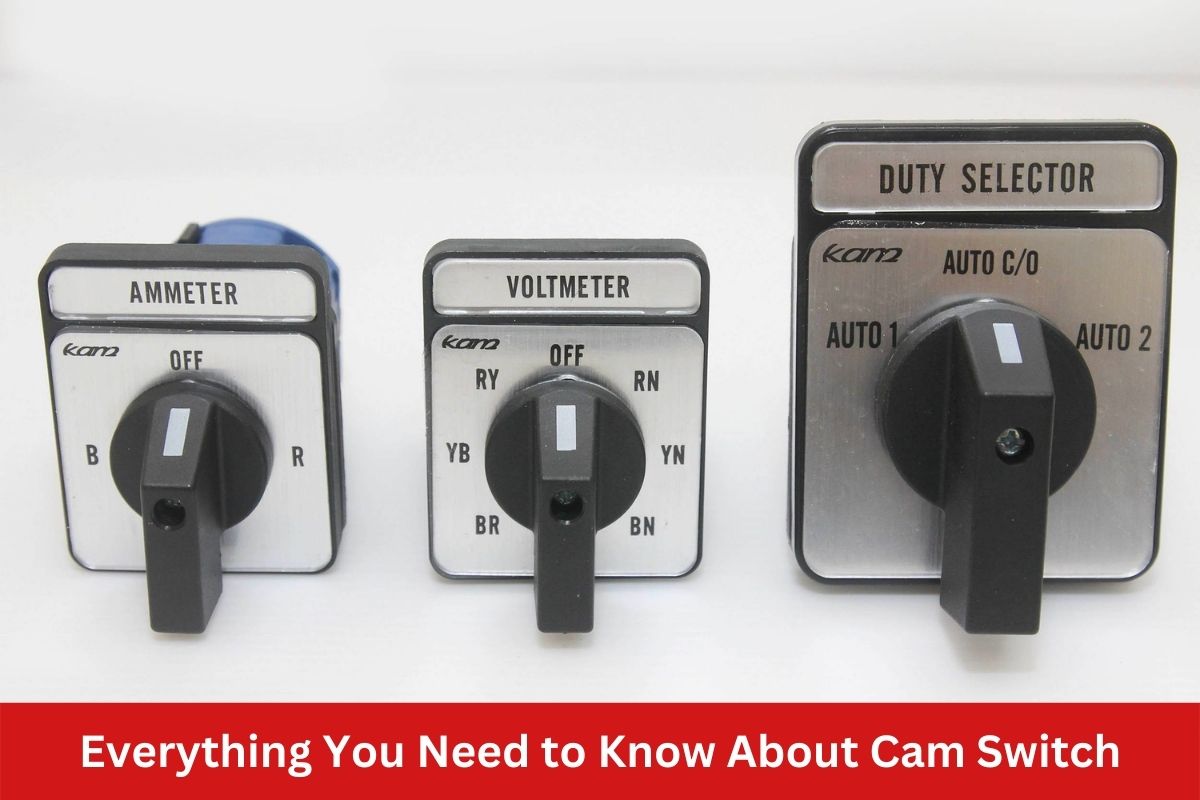It is a switch that transmits electrical energy by varying the angles at which a handle and shaft are turned. Using a cam switch, make and break operations are carried out sequentially by rotating the switch through various positions.
The cam that shuts and releases the contacts can rotate through various locations, allowing for the control of various circuit operations.
Types of Cam Switch
There are different types of cam switches. For example, TME offers a wide range of cam switches, including isolator switches, multistep switches, changeover switches, ammeter selector switches, gang switches, and many more.
If you are looking to purchase your first cam switch, visit TME Electronic Components to discover a wide range of cam switches: https://www.tme.com/us/en-us/katalog/cam-switches_113055/
Multistep Switches
Multiple circuits can share a single power source by way of multi-step switches. Single-pole, double-pole, and three-pole switches are commonly used with two- and three-phase power sources, respectively.
Uses: Multistep switches are helpful for tap-changing switches for stabilizers and Transformers.
Voltmeter Selector Switches
Voltmeter selector switches are installed to switch among phases when measuring a three-phase system. In addition, the voltage across phases and between phases and neutral can be measured using such a switch.
Isolator Switches
You can cut off the power to a specific region of operation completely with the help of isolator switches, which are ON/OFF switches. These switches can be used in instrumentation circuits to turn on and off power to motors, other equipment, and loads.
Uses: On-off, motor, and other switches for specialized applications in the main, controller, and instrumentation circuits.
Ammeter Selector Switches
The ammeter selector switch typically has three positions. Ammeters are needed in each line to monitor current in a 3-phase system. Such switches are employed to monitor currents within circuits containing an analog ammeter, switch, and current transformer.
By adding current transformers to each line and connecting the output to the ammeter selector switch, such a switch is utilized to reduce the number of ammeters needed in a three-phase system.
Changeover Switches
Using a varied number of inputs and outputs to operate two distinct circuits is made much easier by the use of changeover switches. These switches can be used for manual, automatic, remote, or other types of power supply to generator changeovers.
In particular, in UPSs, distribution panels, etc., these switches are employed.
Motor Control Switches
Two-speed forward-reverse, star-delta, and forward-reverse motors commonly employ these switches for control. The overload and power failure tripping features incorporated into these switches make them ideal for use with contactors.
Control Switches
Contactors can regulate motor activities, and control switches are utilized to activate them. Most switches are “spring return” varieties, which latch the circuit with NO contact and make it easier for the tripping mechanism to trigger.
When one switch controls rather than many push buttons, control switches provide a special substitute for numerous “Push Button Stations.” Various settings are available on the control switch to choose the optimal setup.
Why Use a Cam Switch?
Here are the benefits of using a cam switch:
- Easy to use
- Low-cost item
- Small in size
- AC and DC Applicable
- Maintenance-free
- Its IP security is quite high
- Cam switch works in high & low temps
- Easy to install
- It transfers energy from one point to another point like a transfer switch.
Disadvantages of a Cam Switch
- You cannot control the cam switch remotely, just manually.
- It isn’t capable of switching to extremely high currents.
- Its activation requires physical rotating power.
- A cam switch lacks any protection from thermal and magnetic currents.
Key Takeaways
When deciding which Cam Switch is the best option, some of the characteristics you should consider include the number of contacts, the number of pole positions, the number of poles, and the voltage of the switch.
The number of functions that the device can control is directly proportional to the number of contacts and poles it possesses.
Shop Reliable Cam Switches at TME Electronic Components
TME Electronics is a family-owned company that has been operating for over three decades.
It has grown over the years into Europe’s leading distributor of electronic, industrial, electromechanical, and automatic components and workplace equipment, expanding its reputation and the range of business services it offers.



